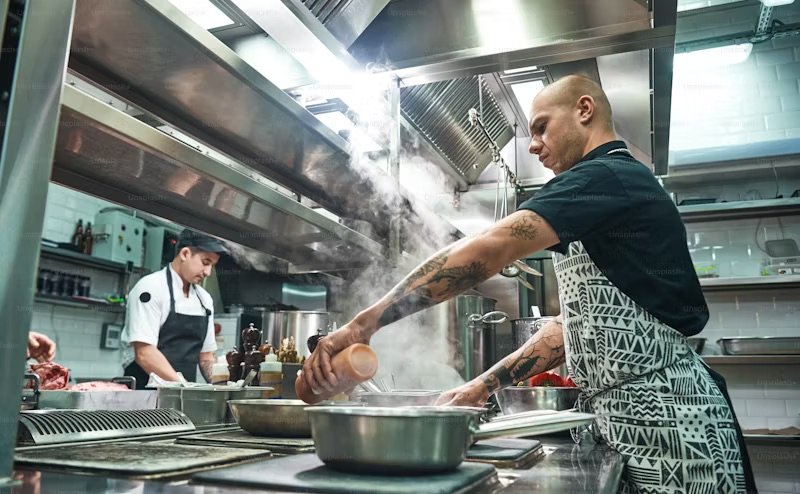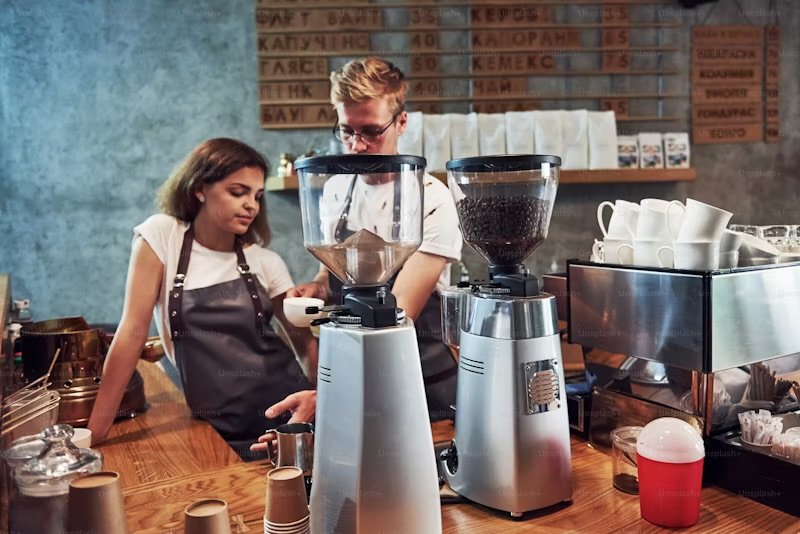Industry Hackathon
I participated in a cross-functional hackathon working with fellow UX designers and web developers in order to solve a design challenge for 7shifts. 7shifts is a company that strives to help restaurants pay, schedule, and retain their team in one easy-to-use app.
Team
3 UX Designers,
2 Web Developers
Tools
Figma, Github, Slack,
Google Slides, Zoom
Role
Product Designer,
UX Designer
Timeline
24 hours
What is 7shifts?
7shifts describes themselves as:
7shifts is a scheduling, payroll, and employee retention app designed to help restaurants thrive. With an easy-to-use app and industry-specific solutions, 7shifts saves time, reduces errors, and helps keep costs in check for over 50,000 restaurants.
Problem Space
These problematic areas of focus were supported by their initial research they provided us:
Average turnover rate in the restaurant industry is around 70% annually, however it has reached a new high of over 140% in 2022 (Forbes).
There 70% more job vacancies compared to pre-pandemic times, and 75% employees plan to leave their job within the next year (National Restaurant Association).
With these data points in mind, they posited the primary design challenge to us in the form of a how might we question.
Initial HMW?
For this design challenge, we were given a preliminary how might we question in order to help us frame the initial issue that 7shifts was facing:
"How might we help restaurants hire and retain employees?”
However, after discussion with the team, we agreed that this initial HMW was far too vague, and that it would need to be refined and elaborated upon after conducting additional research.
Secondary Research
Not only did we believe the secondary research would be helpful to refine our HMW, the UX team also felt it would be a good way to help the web development team with their understanding of the design process. We believed it would be great at setting initial alignment of our entire teams understanding of the issue. Through our research, we uncovered four major issues pertaining to employee retention:
Restaurant jobs are finite - Prospective employees don’t see value in restaurant industry jobs as a long term career, merely as stepping stones.
Lack of proper training - 70% of restaurant employees feel that they do not receive enough hands on training from their managers, leaving them ill-equipped for their roles.
Career progression opportunities - Employees are more likely to be remain if they can see realistic opportunities for upward career mobility in the industry.
Job stagnation - In addition to the lack of initial training, employee desire to feel a sense of purpose (overall job value), mastery (building expertise), and autonomy (self decision-making) in their job positions.
Revised How Might We?
After synthesizing these insights, we determined that they all contributed to an overall theme of 'value'. That is, restaurant employees do not see value in short lived job positions, especially positions where they are unable to move up in career advancement. Furthermore, employees feel they cannot provide proper value if they are insufficiently trained, and cannot build value if they aren't learning skills, making their own decisions, or feeling fulfilled in these roles. This common theme really helped us to reframe the initial how might we question and focus in on a solution.
“How might we help restaurant managers make their staff feel more valued through digital solutions, in order to improve employee retention?”
Persona
Our team created a persona stemming from our secondary research and revised how might we question. Developing the persona was an important anchor point and point of reference that helped our team keep the employees at the forefront of our design solution.
Product Audit
We also decided to conduct a product audit of 7shifts current features. It was important for us to know the features and benefits that 7shifts currently brought to the table, but also identify any gaps in the product where we thought we could offer additional value. That being said, the core features of 7shifts are:
Employee Scheduling: create a schedule and assign shifts to employees.
Tip Pooling: tip payout calculator that allows customizability and improves efficiency.
Time-clocking: track and manage employee attendance.
Task Management: create and assign tasks to get through work with visible results.
Engagement: collect employee insights such as no shows, lates, and celebrate milestones like birthdays and employee of the month.
Communication: internal messenger app to facilitate team communication.
Hiring: post open job positions, while tracking and ranking job applicants.
Manager Log Book: create notes for manager documentation and recordkeeping.
Competitive Audit
Once we completed the product audit, the next logical step for us was to observe what the competitors were doing. One example we uncovered in our research is Toast, a company that offers restaurant management software in addition to point-of-sale (PoS) terminal services. Due to time constraints, we found it difficult to analyze other competitors. However, we would definitely have looked at 2-3 competing businesses in order to get a better sense of the industry.
Value Proposition
After better understanding what 7shifts as a product offers, and gaining some insight into 7shifts’ competitors, we began ideating on solutions to accomplish two primary goals:
expanded upon an existing 7shifts feature, or innovate a new solution.
be relevant and address the problem statement and how might we question.
We felt that these two points were critical in finding a solution that would add value to the existing 7shifts product. In our brainstorming session, we ideated a brand new feature that we believe addresses the critical issue, called ‘Skillbuilding’.
Skillbuilding
Skillbuilding is a new feature that would be added to the existing range of 7shifts features. The feature would allow employees to request training and notify their managers within the software, that is relevant to their interests or career path within the industry. This would accomplish a number of different things:
It creates opportunities for role growth, providing upward trajectory and reducing job stagnancy.
Build and foster their individual abilities by promoting
individual mastery and skill.Provide value by showing employees possibilities in the restaurant industry as a long term career.
Focuses on the existing employees businesses have, reducing costs by not having to constantly train new staff, and providing a sense of teamwork and camaraderie.
Task Flow
In order to help visualize what the skillbuilding feature would look like, we created a task flow in FigJam that would help us build out a prototype, and also communicate to the web development team how the process would work from a functionality standpoint.
Sketches
After establishing the task flow, my fellow UX designers and I created different variations of sketches, communicating and collaborating on our initial ideas. The 7shifts media kit also provided some image samples of all of their product features gave us a point of reference for their existing UI.
A key learning point here was designing iteratively. We constantly made adjustments on our sketches after discussing functionality and limitations with our developer peers. Ensuring functionality while also sticking to the needs of our target users embodied by our persona was key.
7shifts Branding Guidelines
We utilized the media kit from 7shifts website in order to adhere to their branding guidelines. However, we switched the typography from Apercu to Avenir due to Apercu being a licensed font, and it just wasn't sensible purchasing a font for the purposes of the hackathon. Avenir closely resembles the Apercu font that 7shifts utilizes in their branding. Having the 7shifts media kit and style guide available was a blessing since it made developer handoff seamless.
Note: 7shifts underwent a visual facelift and the colours
and typography shown here are no longer up to date.
Low Fidelity Wireframes
After collecting assets and preparing text and colour styles, we created low fidelity wireframes to provide our developers an easy roadmap to production. Again, the pre-existing style guide provided convenience to help replicate the 7shifts UI.
High Fidelity Wireframes
Injecting colour really helped bring the wireframes to life, and helped polish off what ‘Skillbuilding’ could bring to the table.
Key Learnings
Major theme: embracing working through the chaos of delivering a product in 24 hours.
Learning how to work cross functionally with development teams, and using whatever knowledge I have of front end development to understand how the limitations apply to UX.
Getting a sense of real world experience by deciding which UX methods and tools correctly solve the problem.
Lastly, despite some of the messiness of this process, prioritizing a product thats finished rather than a product thats ‘perfect’.





















